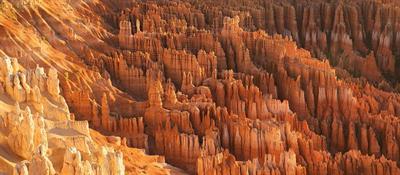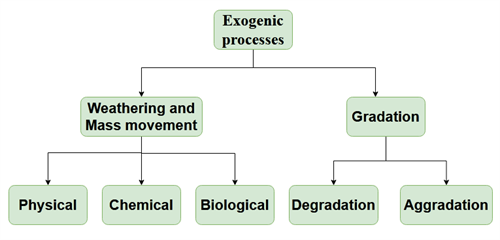
PUMPA - SMART LEARNING
எங்கள் ஆசிரியர்களுடன் 1-ஆன்-1 ஆலோசனை நேரத்தைப் பெறுங்கள். டாப்பர் ஆவதற்கு நாங்கள் பயிற்சி அளிப்போம்
Book Free DemoIn the previous chapter, we learned how the endogenic processes create landforms through various types of interactions. In this chapter, we'll get a good understanding of how the exogenic process works, how transportation of weathered materials takes place, various types of erosional and depositional landform features associated with rivers, underground water, glaciers, waves and winds.
The Earth undergoes various changes due to internal and external processes. The continuous interaction of internal and external processes determines the structure of the earth’s surface. The external processes result from solar energy and gravitational forces, whereas the internal processes result from the earth’s internal heat.

Bryce canyon rock formation
Exogenic processes are geological phenomena and processes that originate external to the Earth’s surface. They are basically related to the atmosphere, hydrosphere and biosphere, and therefore to processes of weathering, erosion, transportation, deposition, denudation etc. Exogenic factors and processes could also have sources outside the Earth, for instance, under the influence of the Sun.
